Here are 20 inspiring ideas to create a functional, safe, and stylish toddler room. You can incorporate versatile furniture like convertible beds and cribs, mix playful colors and textures, and add interactive elements such as chalkboard walls or magnetic decals. Smart storage—built-ins, low shelves, and baskets—keeps toys organized and accessible. Soft rugs and gentle lighting ensure comfort and safety, while reading nooks and gallery walls encourage learning and creativity. Embracing eco-friendly materials and DIY accents personalizes the space, and themed decor or personalized name art adds character. These ideas draw from leading design sources to help you craft a room your toddler will love and grow with.
1. Convertible Toddler Bed
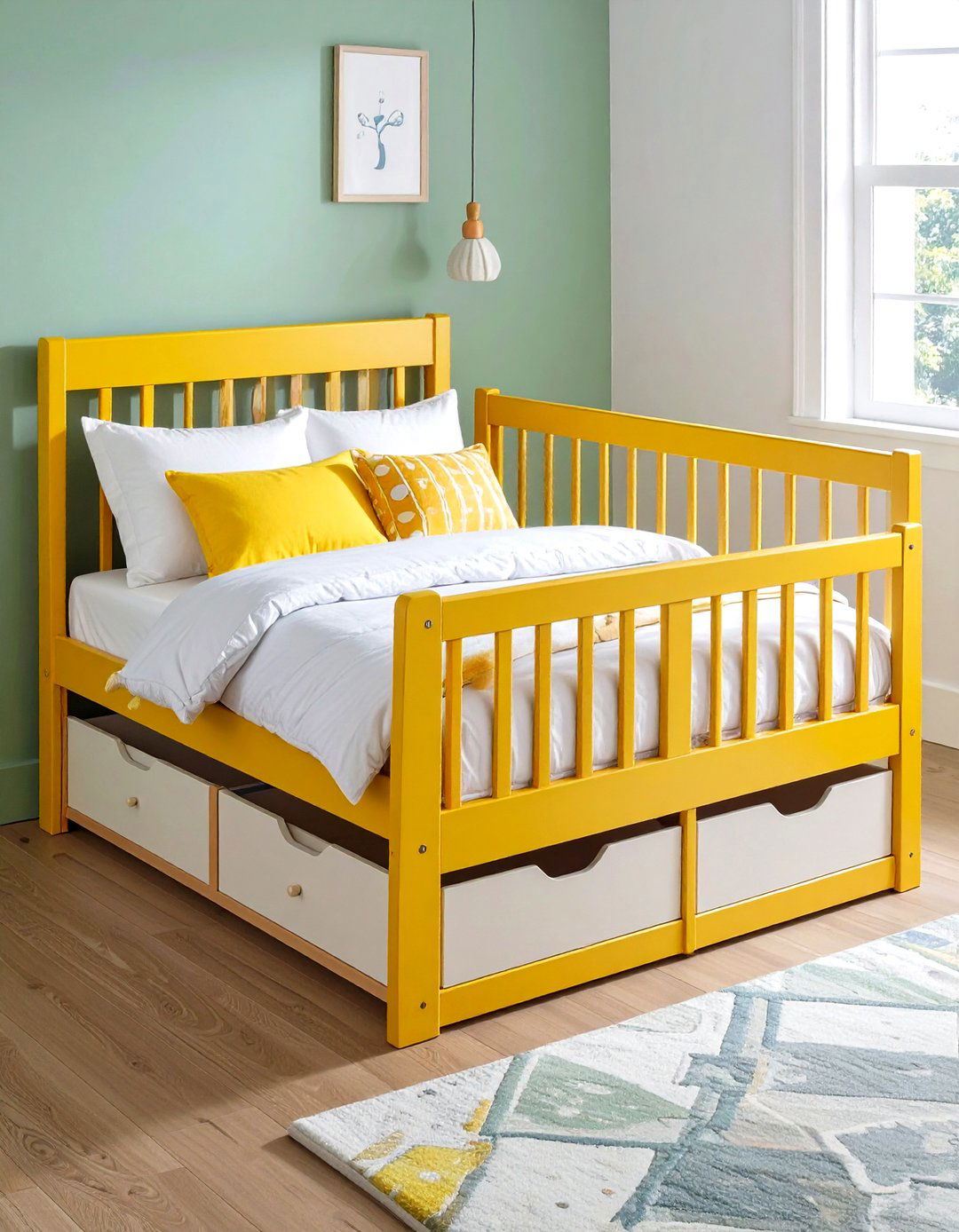
A convertible toddler bed that transforms from a crib or toddler rail bed into a twin or full-size bed adapts as your child grows, protecting your investment. Many designs feature low profiles and guardrails, helping toddlers feel secure while learning to climb in and out independently. Choose styles with built-in drawers underneath for hidden storage or accent fabrics for a cozy look. Convertible beds often meet stringent safety standards and can be dressed up with fun bedding to match room themes.
2. Graphic Color Scheme
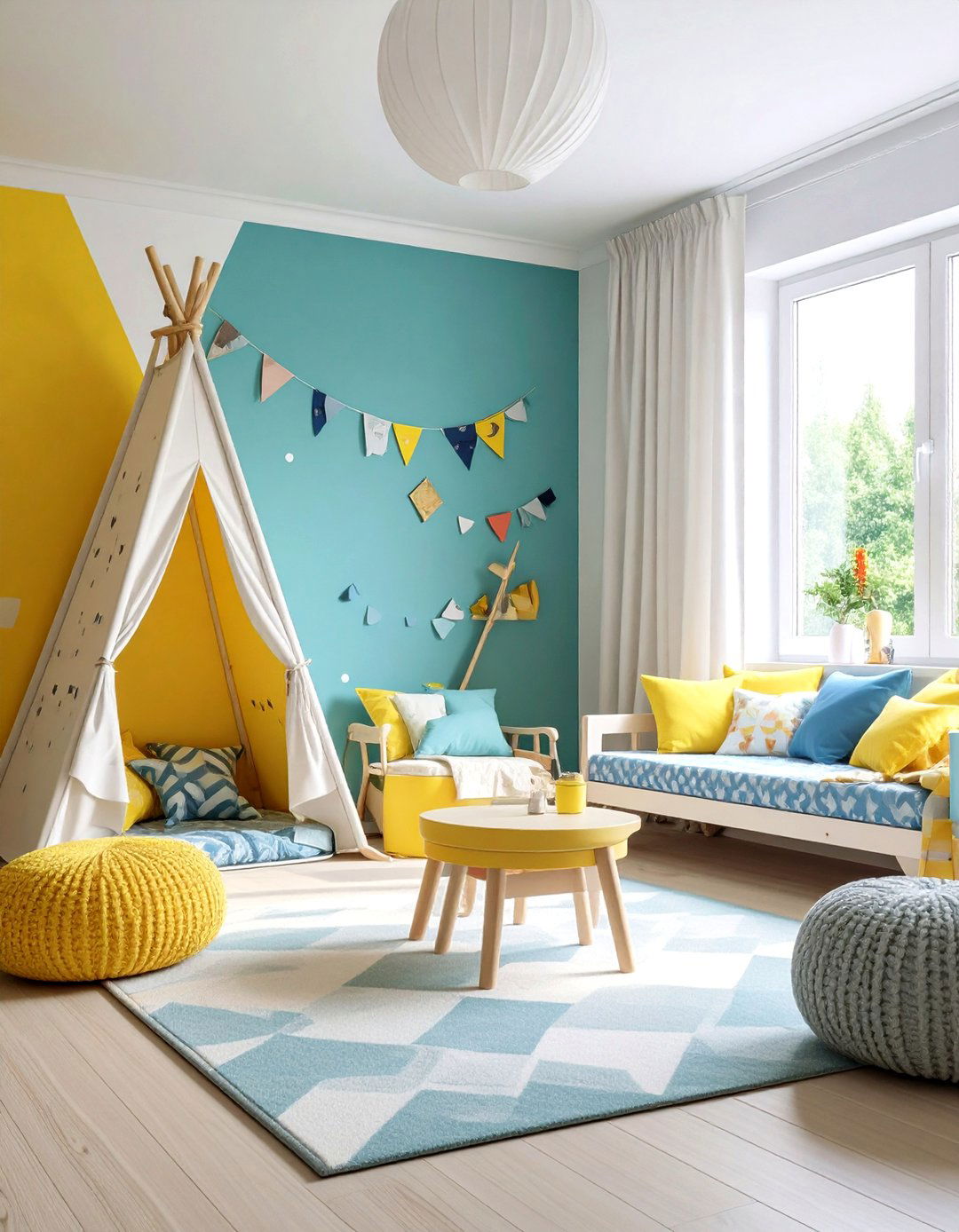
Bold, graphic color schemes—involving contrasting hues or simple geometric patterns—inject energy into a toddler’s room without overwhelming it. Consider painting an accent wall in a single geometric shape or stripe in two complementary colors, leaving the other walls neutral to balance stimulation and calm. Graphic decals can be applied and removed easily as tastes change. Coordinating textiles—pillows, linens, and curtains—echo the palette, tying the room together.
3. Textural Rug
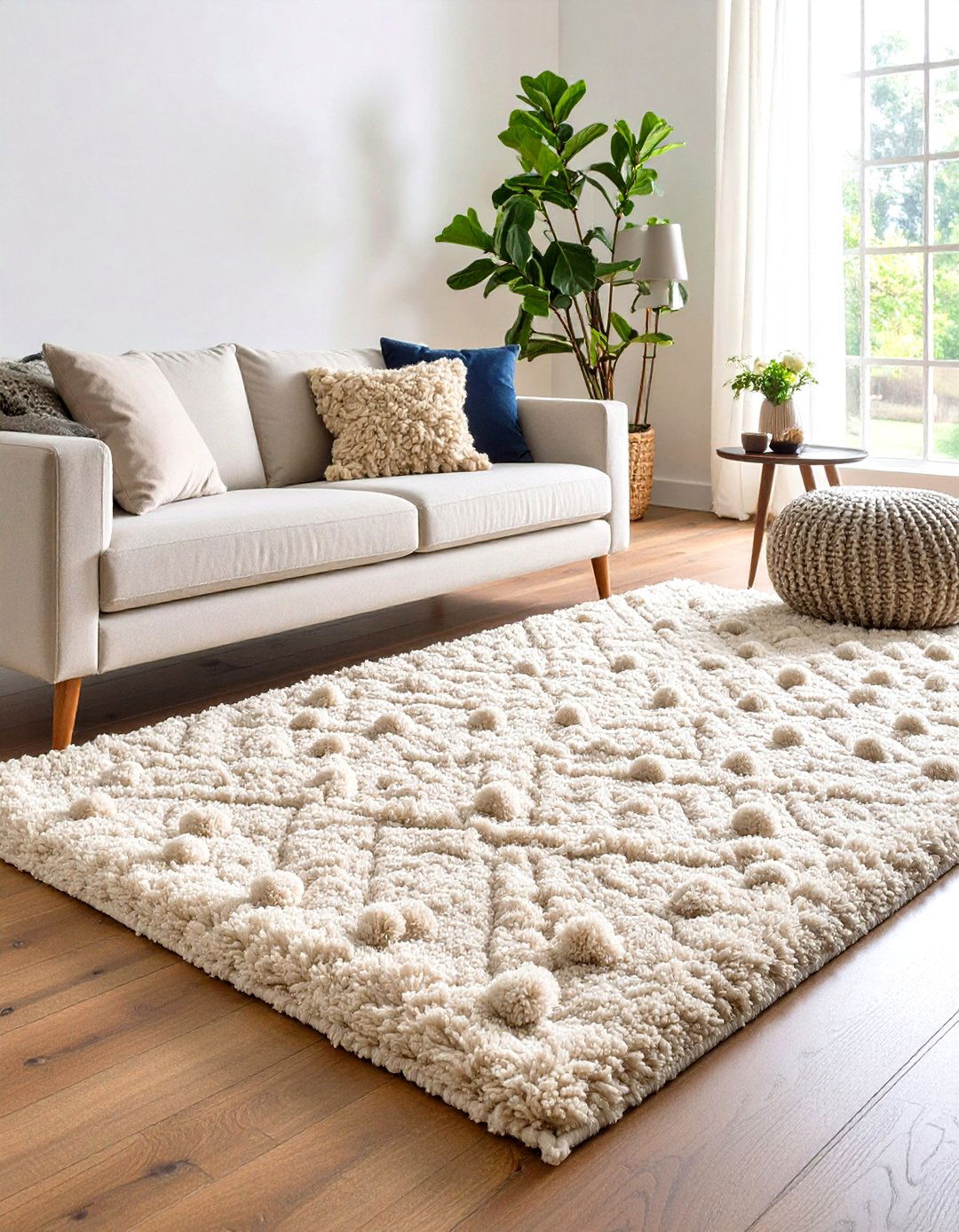
A plush, textural rug provides a soft landing for little feet and cushioning for tumbles while adding visual warmth. Options range from shag and braided styles to woven rugs with raised loops or pom-pom details. Neutral tones allow the rug to complement any theme, while playful patterns can define a play zone. Look for rugs labeled non-slip or pair with a gripper pad to keep the rug in place.
4. Bold Wallpaper
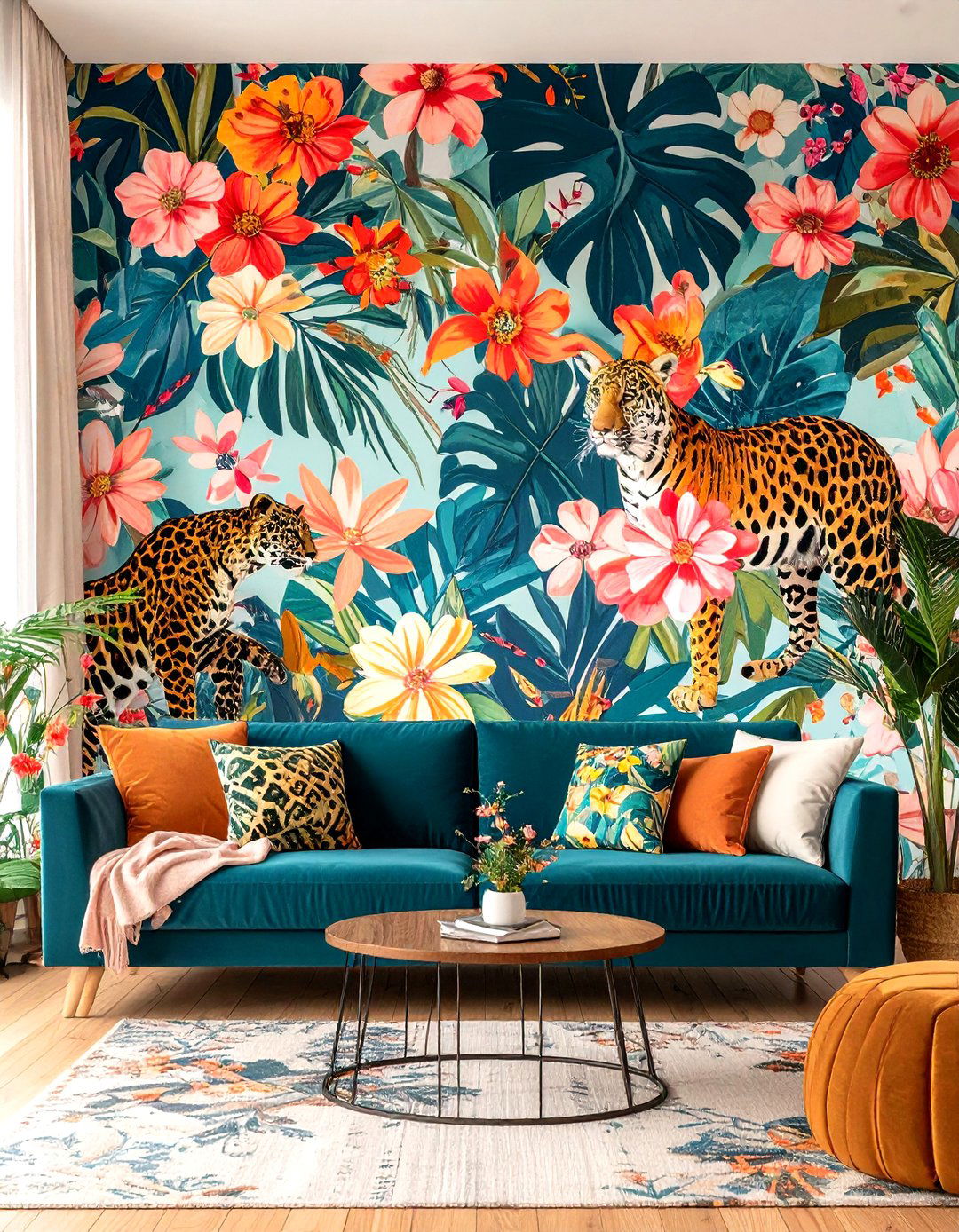
Vibrant wallpaper—whether a large-scale floral, whimsical animal print, or geometric repeat—creates an instant focal point. Paste-and-peel options make it renter-friendly and easy to update. Install just one wall to avoid overstimulation and balance it with solid paint on adjoining walls. Removable wallpaper also accommodates changing interests, from dinosaurs to princess castles.
5. Built-In Storage
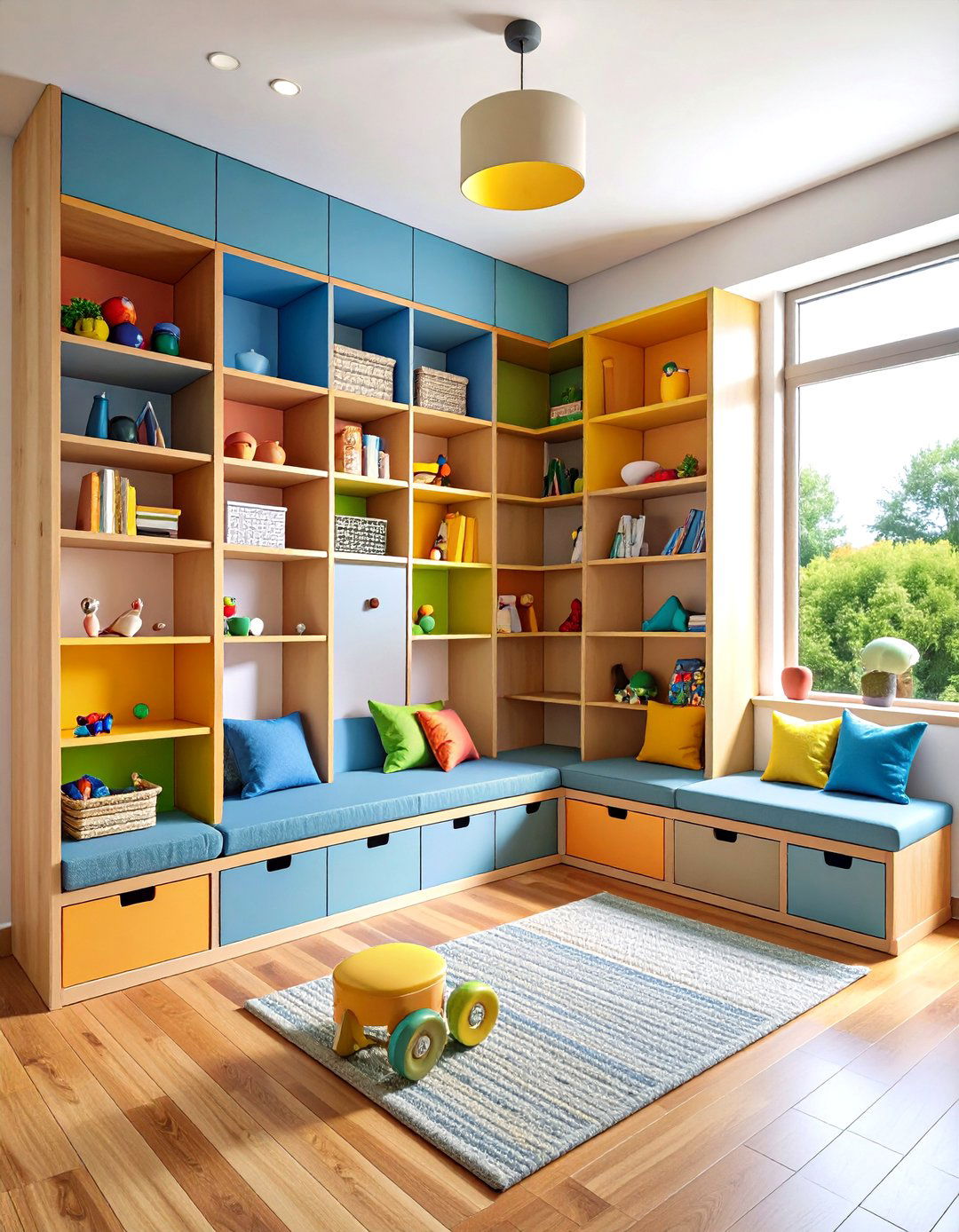
Built-in storage solutions such as floor-to-ceiling cabinets, cubbies, or bench seats with hidden compartments maximize space without clutter. Custom shelving can be tailored to your room’s dimensions, incorporating cubbies at toddler height so they learn to tidy independently. Bench seating with built-in bins doubles as a reading spot, while drawers beneath beds make toy rotation effortless.
6. Learning Nook
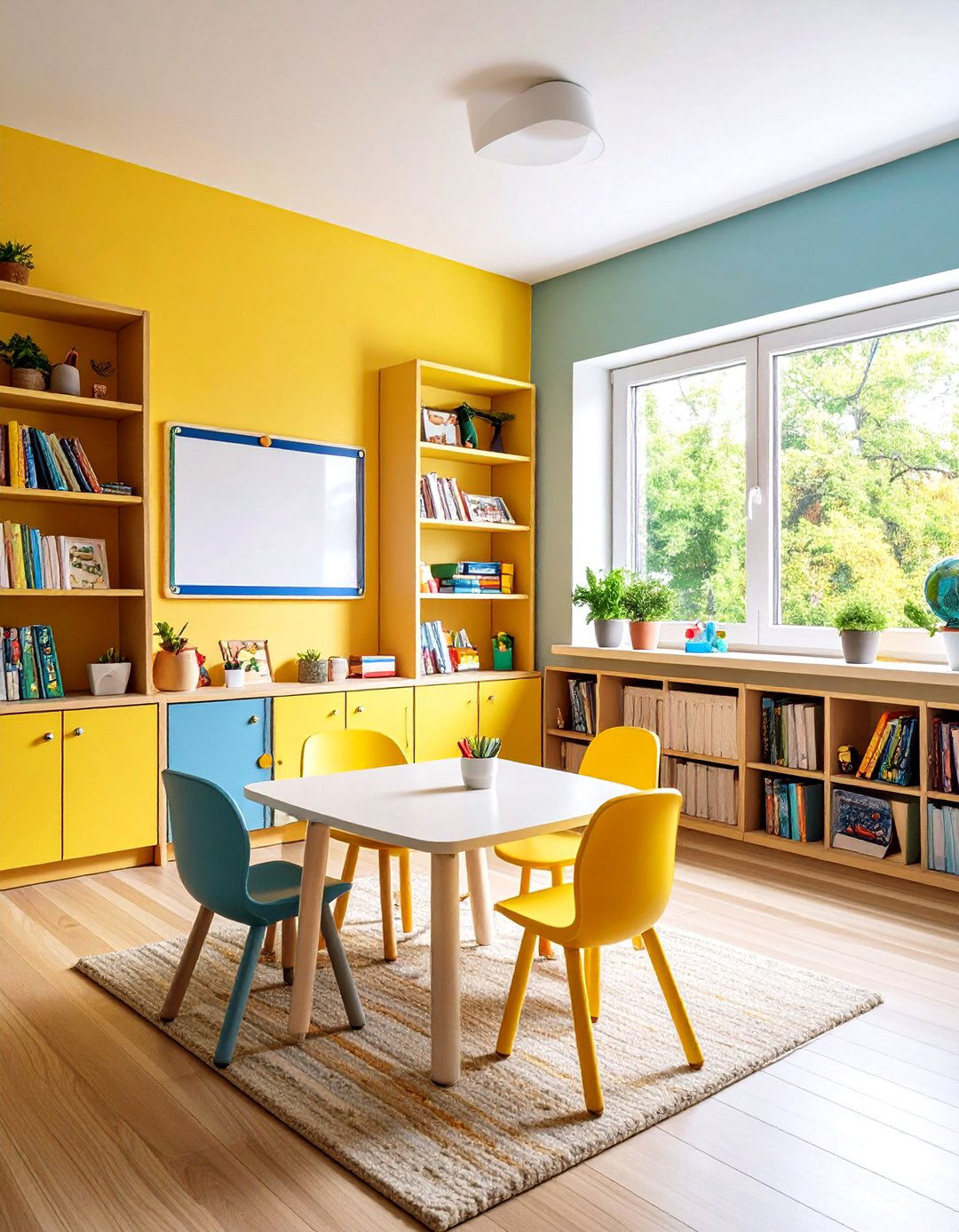
Carve out a cozy learning nook with a small table and chairs, chalkboard wall, or magnetic board to encourage drawing and hands-on play. Add a low bookshelf filled with board books and puzzles, and accent with a soft rug to define the area. Proper lighting—such as a clip-on lamp—ensures the space is inviting for early art and literacy activities.
7. Statement Walls
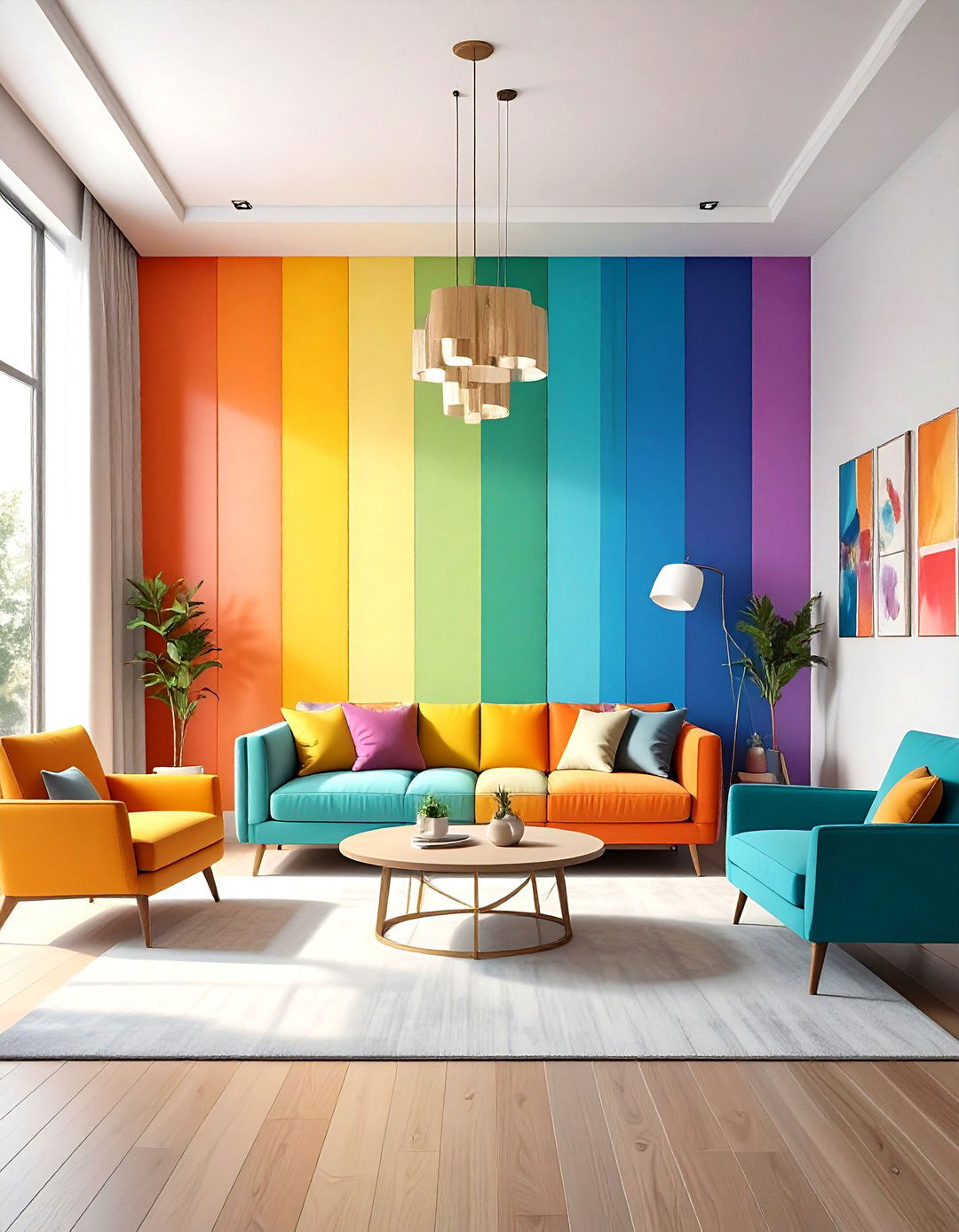
Beyond wallpaper, statement walls using paint techniques—ombre fades, two-tone blocks, or stenciled motifs—add character. For example, paint the lower half of a wall a deep hue topped with crisp white, separated by a painted “rail.” This approach is durable for scuff-prone areas and can grow with your child by simply painting over when tastes evolve.
8. Smart Storage Solutions
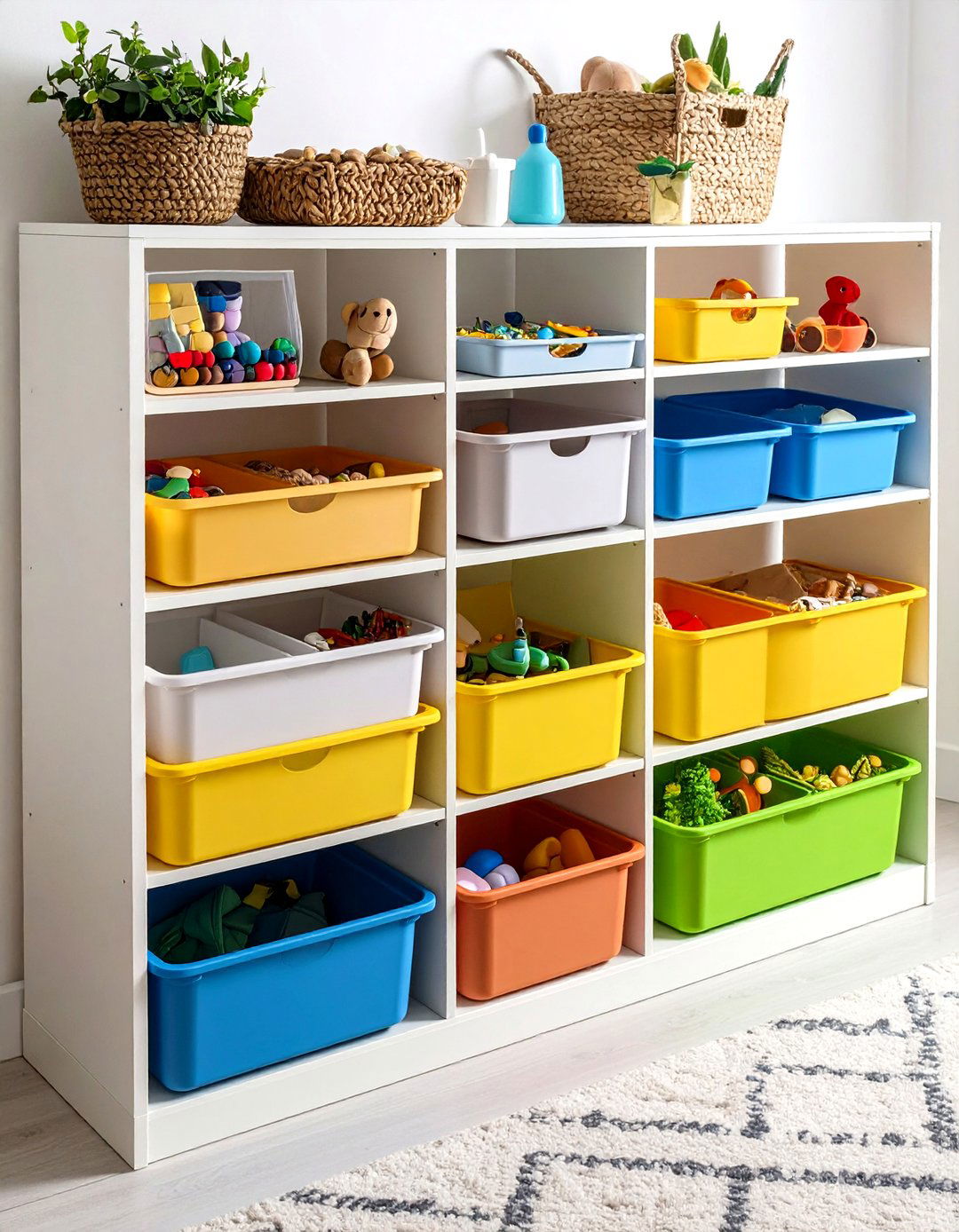
Modular storage pieces like stackable bins and cubbies can be reconfigured as needs change. Use labeled baskets for toy categories—blocks, dolls, cars—to teach sorting skills. Rolling carts on casters can store art supplies close to the learning nook and be rolled away for floor play. Choose materials—wood or sturdy plastic—that withstand the rough-and-tumble of toddler life.
9. Open Shelving
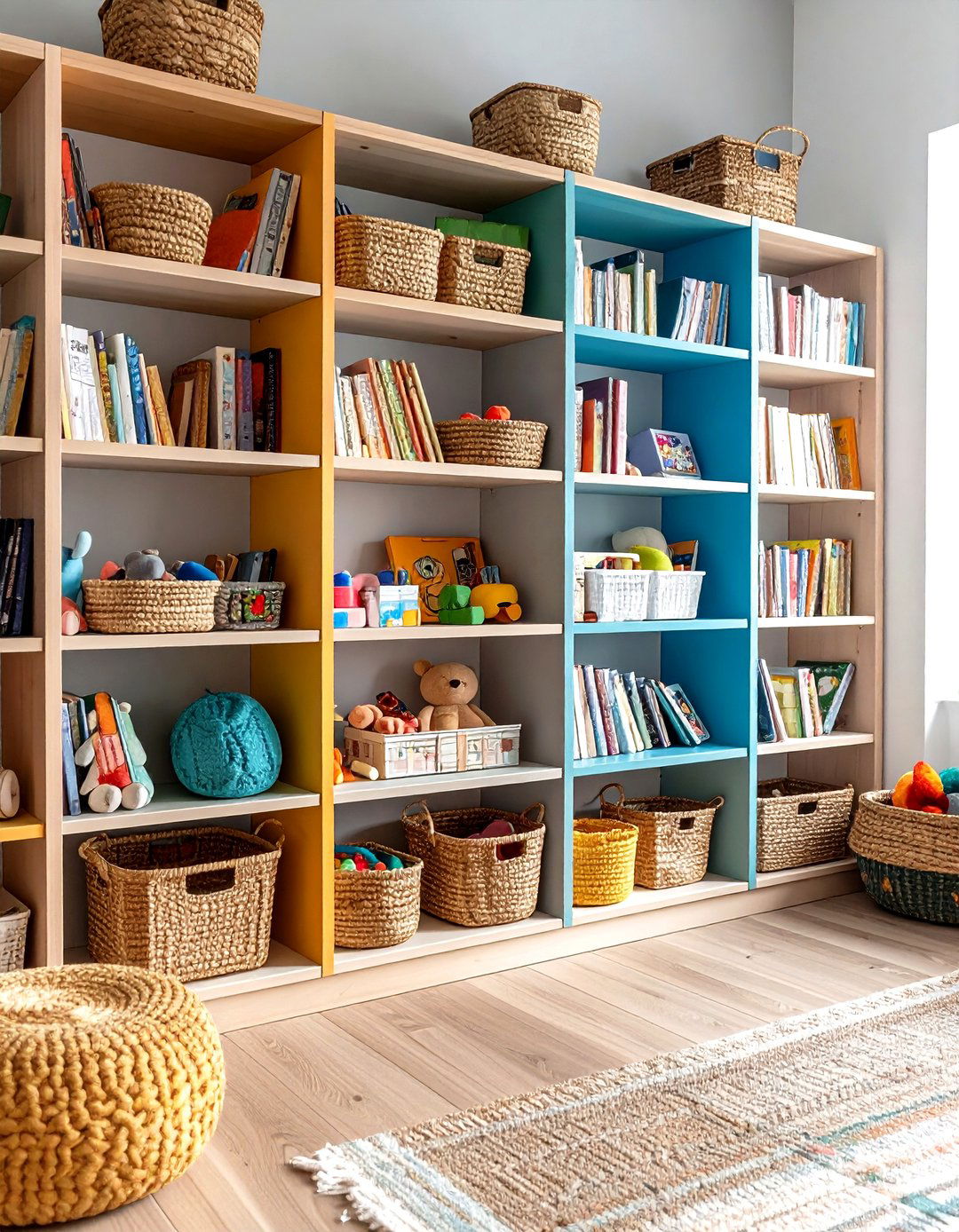
Open, low shelving units put favorite toys and books within reach, promoting autonomy and reducing frustration. A linear arrangement of shelves also creates a display gallery for cherished items. Anchor shelves securely to the wall to prevent tipping, and mix in woven baskets to conceal clutter and soften the look.
10. Gallery Wall

A rotating gallery wall showcases your toddler’s artwork and family photos in mismatched frames for a playful vibe. Install a picture ledge or wire with clips to swap art easily, keeping the display fresh. This inspires creativity and pride in seeing their creations highlighted at eye level.
11. Chalkboard Wall
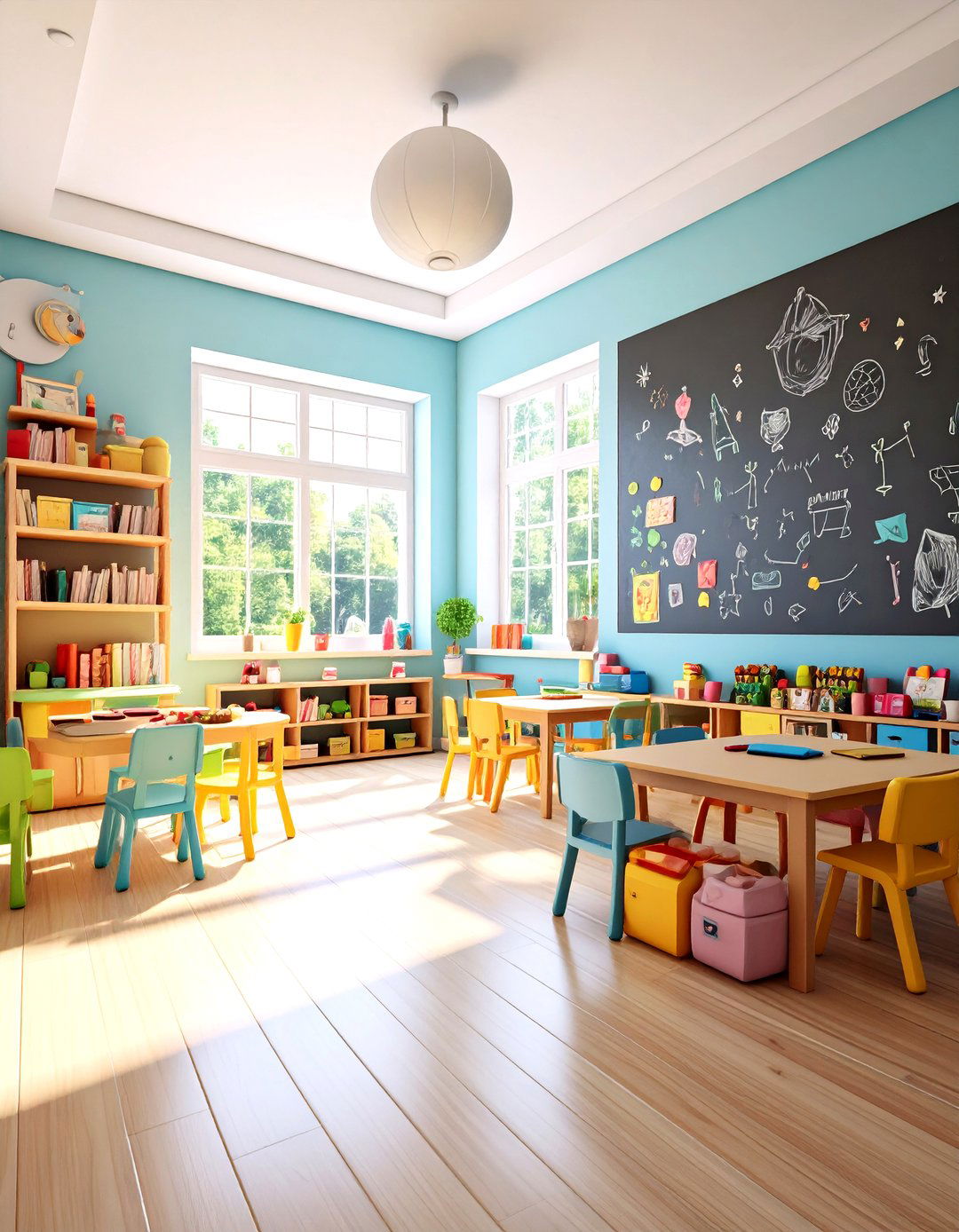
A full-size chalkboard wall or free-standing chalkboard panel encourages drawing and learning letters and numbers. Chalkboard paint can be applied to one wall or inside closet doors. Provide sets of colorful chalk and teach simple cleanup habits. Magnet-reinforced chalkboards allow magnetic letters, combining two activities in one space.
12. Magnetic Wipe-Off Decal

Magnetic, wipe-off wall decals let toddlers sketch with markers, magnets, or chalk, then clean easily—perfect for early doodlers and reducing unwanted wall art. These decals peel on and off, making them renter-friendly. They also serve as a backdrop for learning shapes and letters with magnetic sets.
13. Indoor Slide
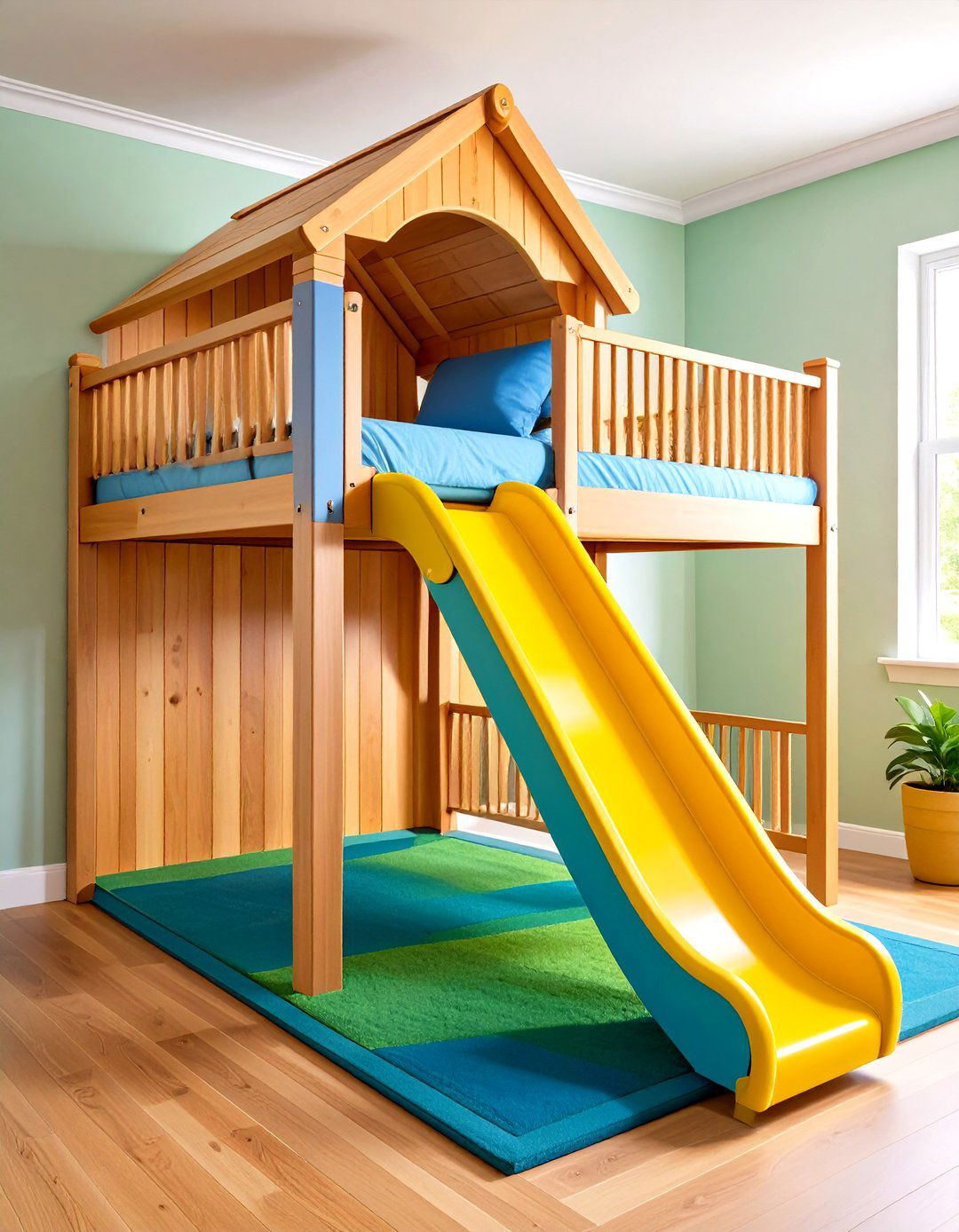
For an extra-playful touch, install a small indoor slide or ramp next to a low loft or bed platform. This encourages gross motor development and adds excitement. Choose rounded edges and soft landing zones to maximize safety.
14. Reading Nook
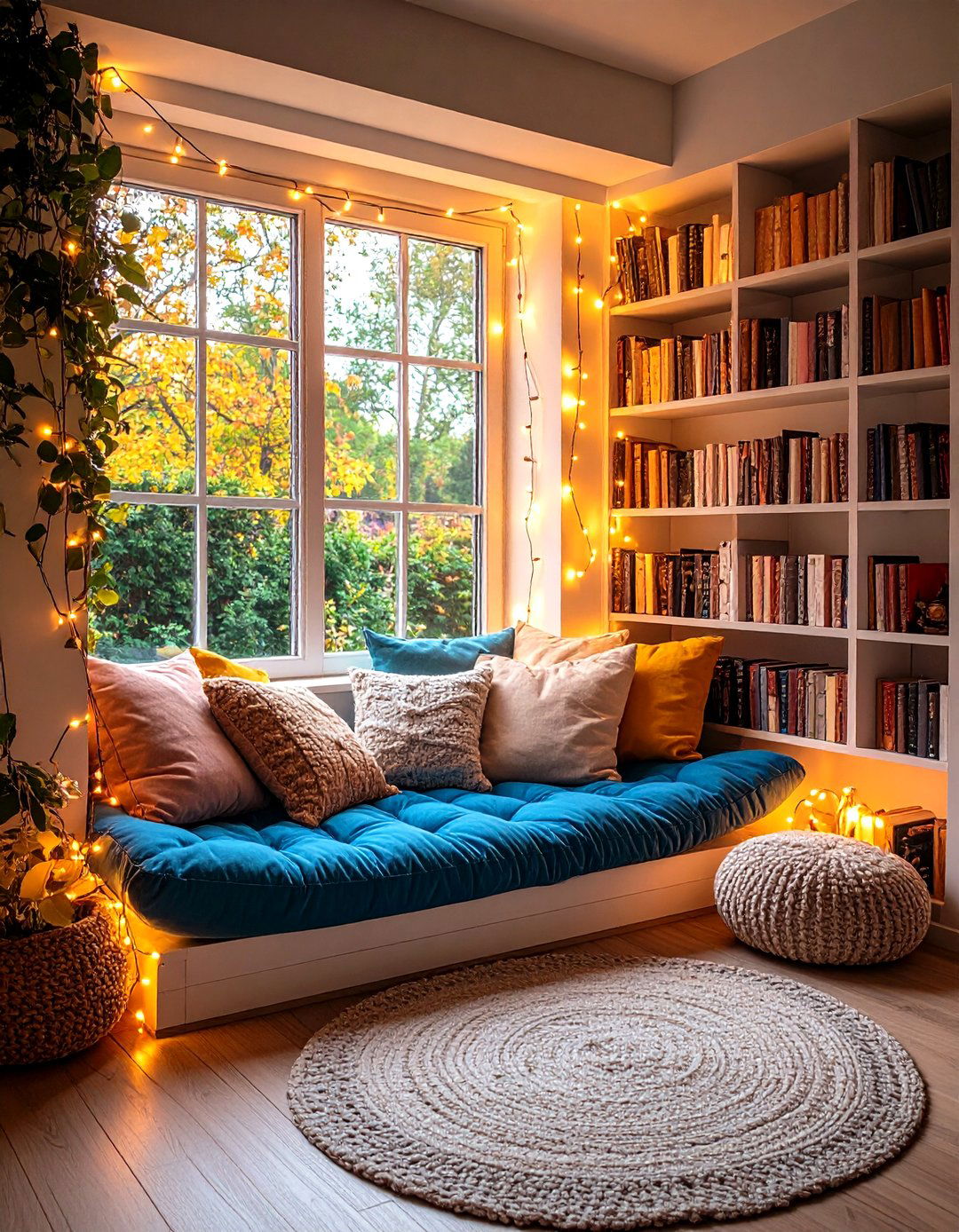
Create a reading nook with a cushioned window seat or beanbag chair, flanked by low bookshelves stocked with board and picture books. Soft fairy lights or a wall-mounted reading lamp set the mood for storytime. Place a small pillow and throw blanket for added coziness.
15. Eco-Friendly Lighting
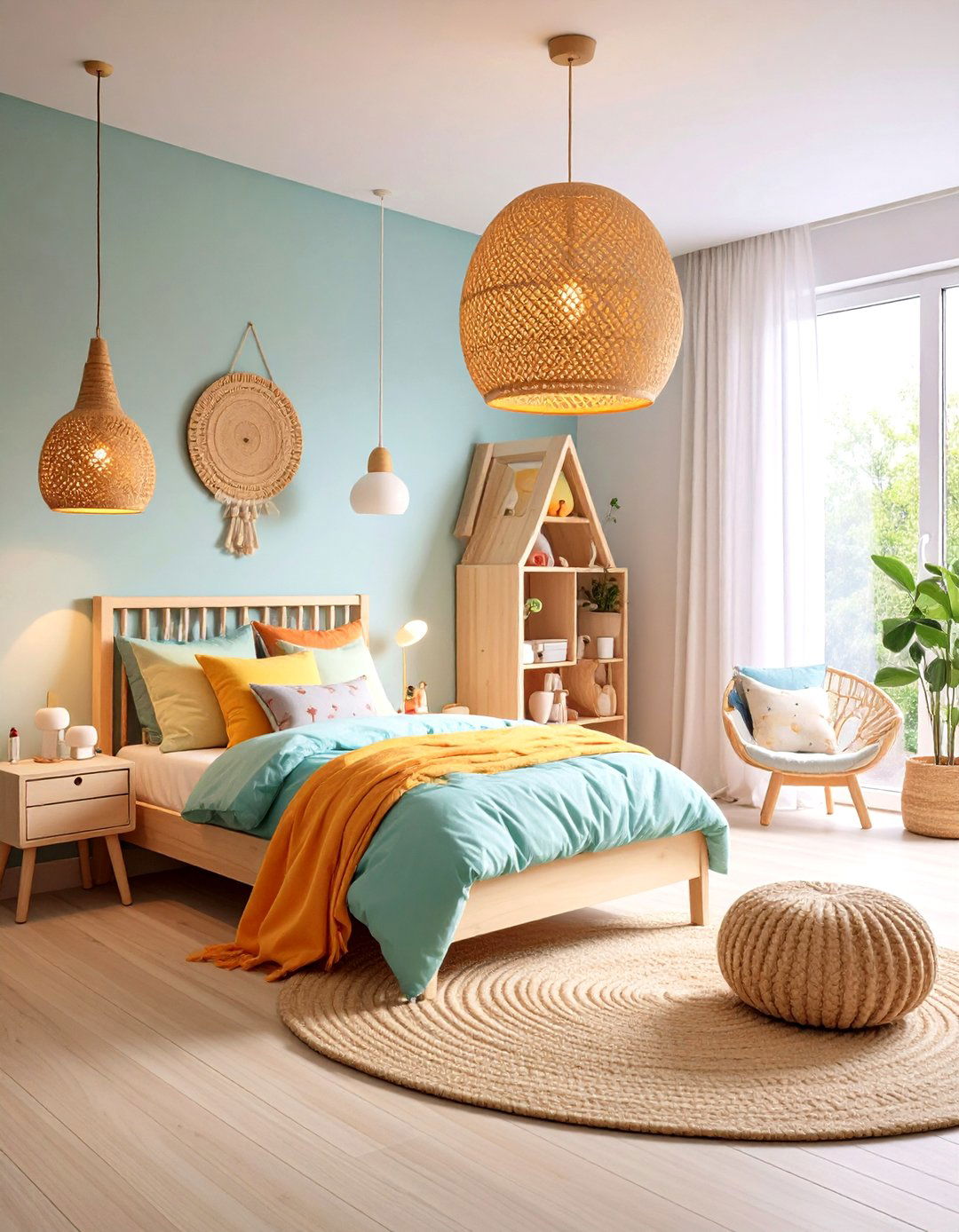
Use energy-efficient LED fixtures with warm-tone bulbs to provide gentle illumination. Rattan or bamboo lampshades add natural texture, while dimmable wall sconces help create a soothing bedtime atmosphere.
16. Minimalist Approach
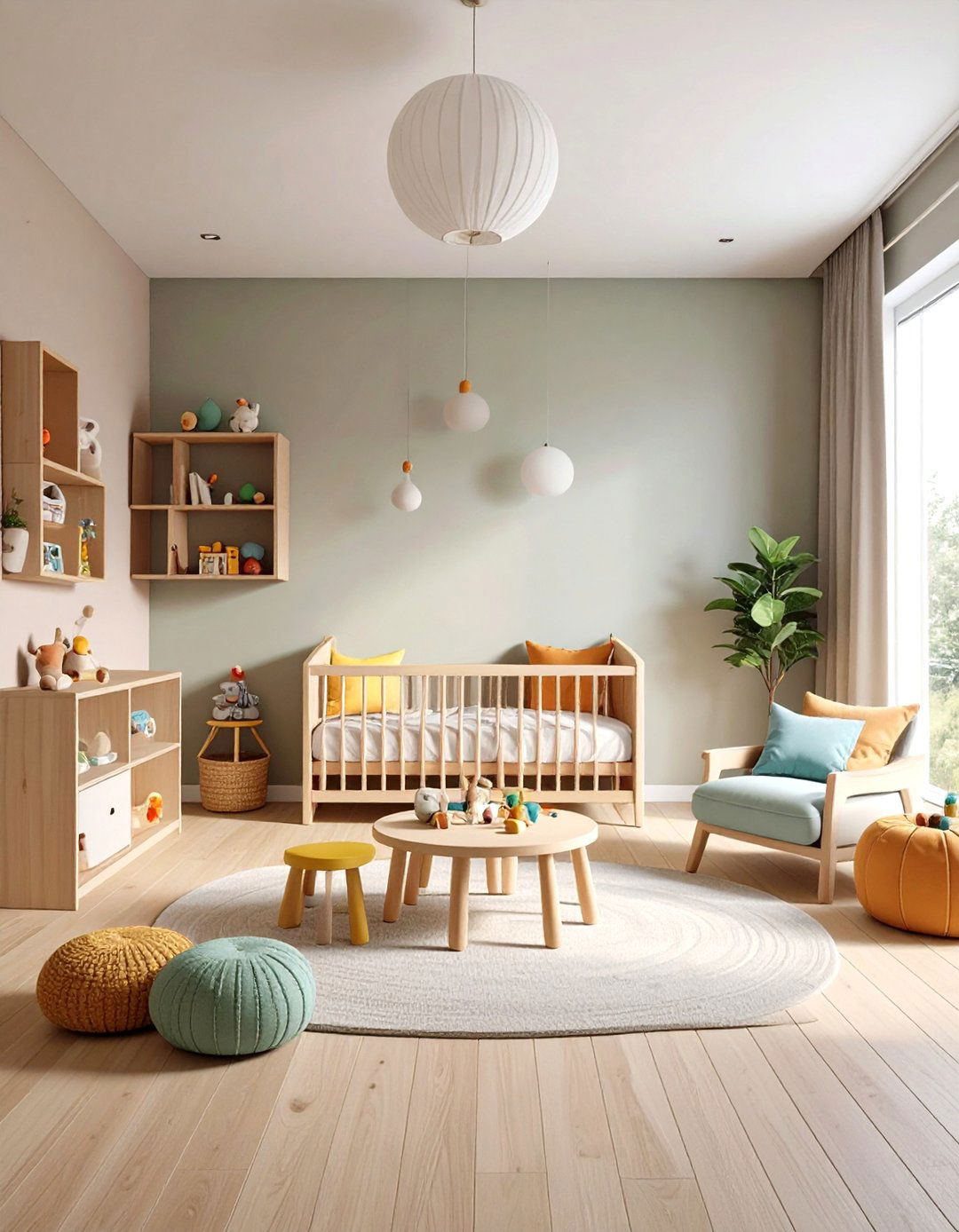
A minimalist design reduces clutter and sensory overload. Keep furnishings to a few essential pieces—a bed, storage, and play area—accented by neutral walls and simple décor. This clean slate approach makes the room easier to organize and decorate as interests change.
17. DIY Giant Playroom Chalkboard
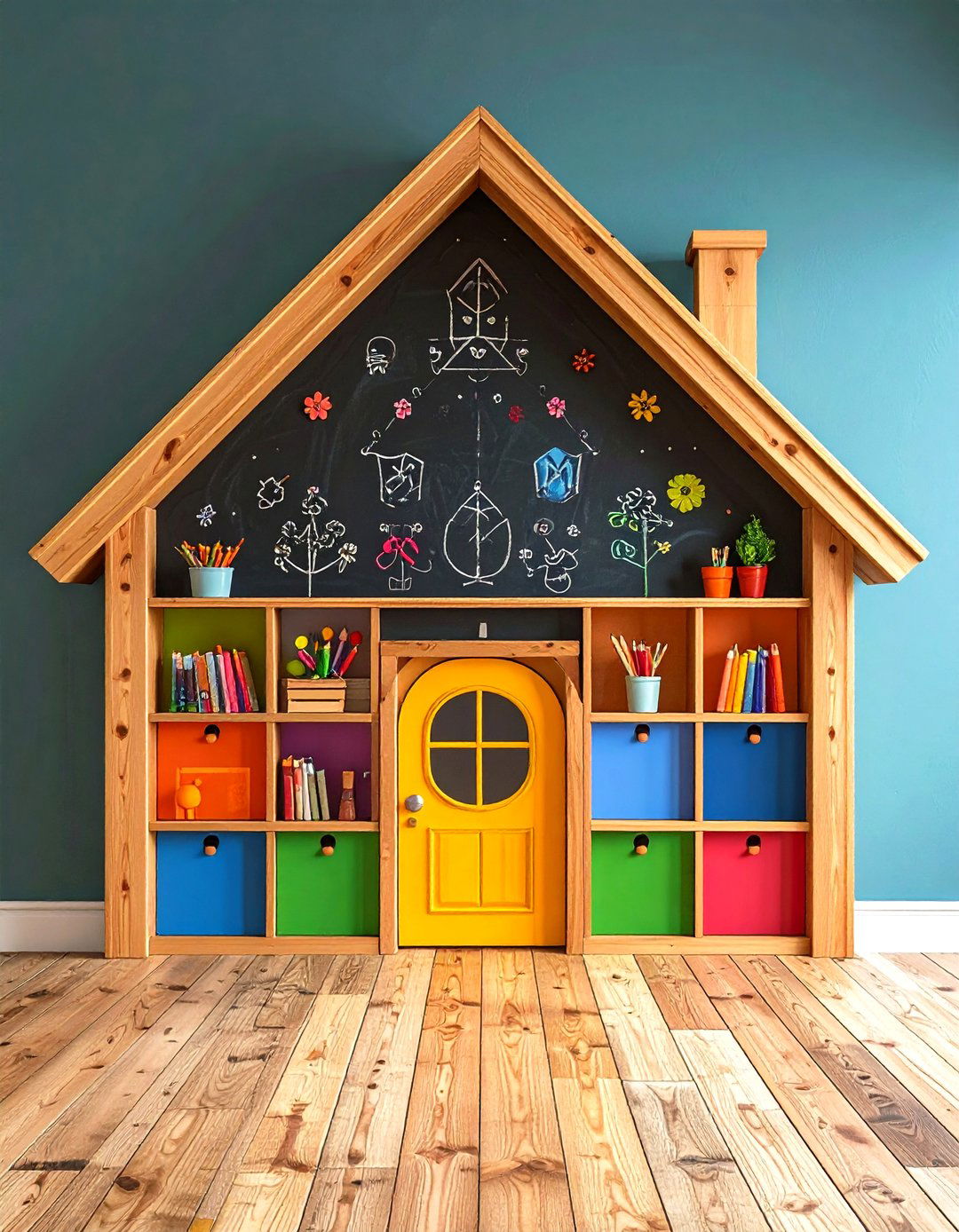
Build a DIY giant chalkboard wall—perhaps in a fun “house” shape—to fill an empty wall inexpensively. Use plywood and chalkboard paint, or large chalkboard panels, then frame with molding. Toddlers love the novelty and size, and you can customize shapes to suit the room’s theme.
18. Activity Rug
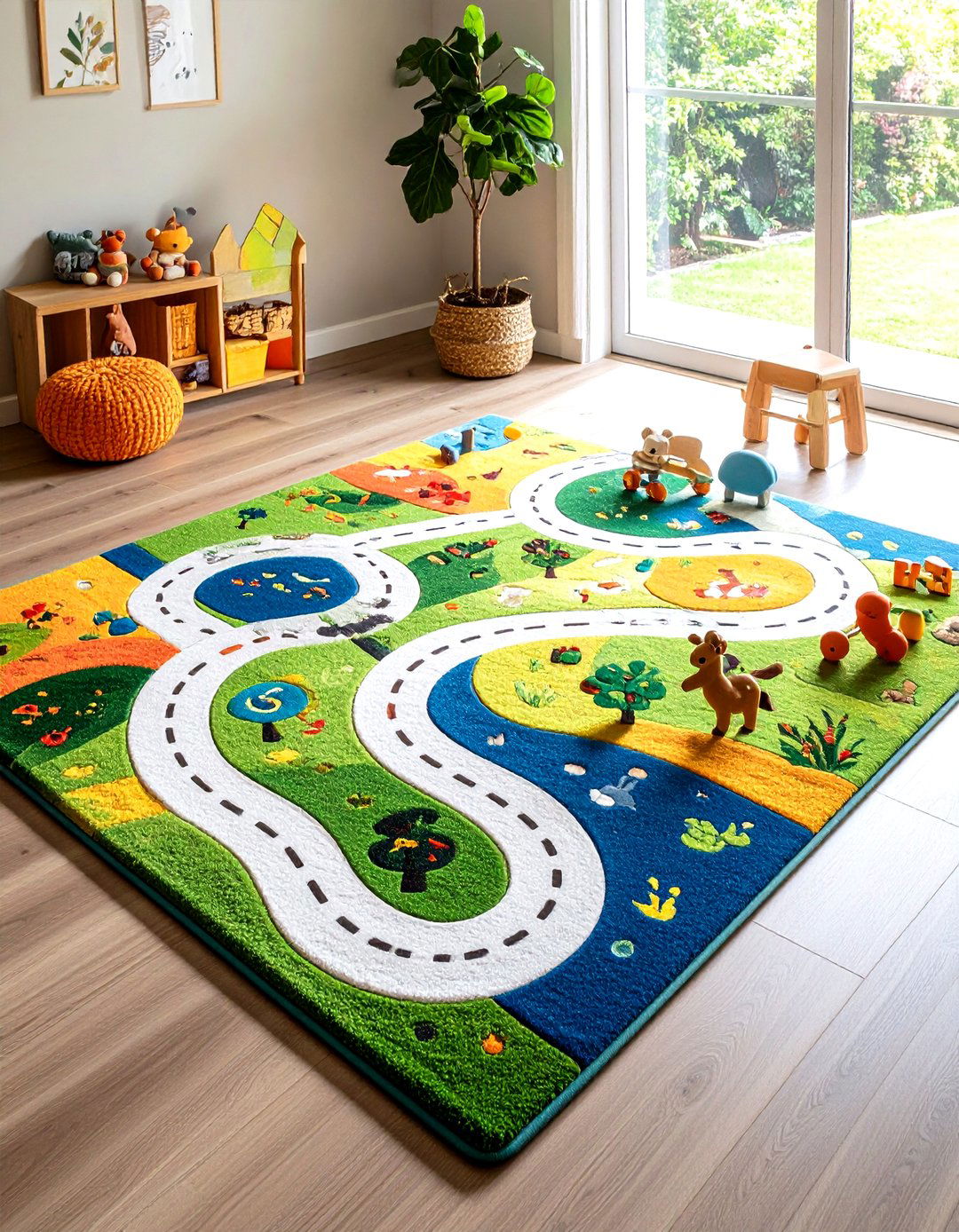
An activity rug printed with roads, numbers, or an animal scene sparks imaginative play. Place it under the learning nook or slide for a defined play zone. Easy-clean materials handle spills and washable dyes maintain color vibrancy.
19. Low-Profile, Rounded Furniture
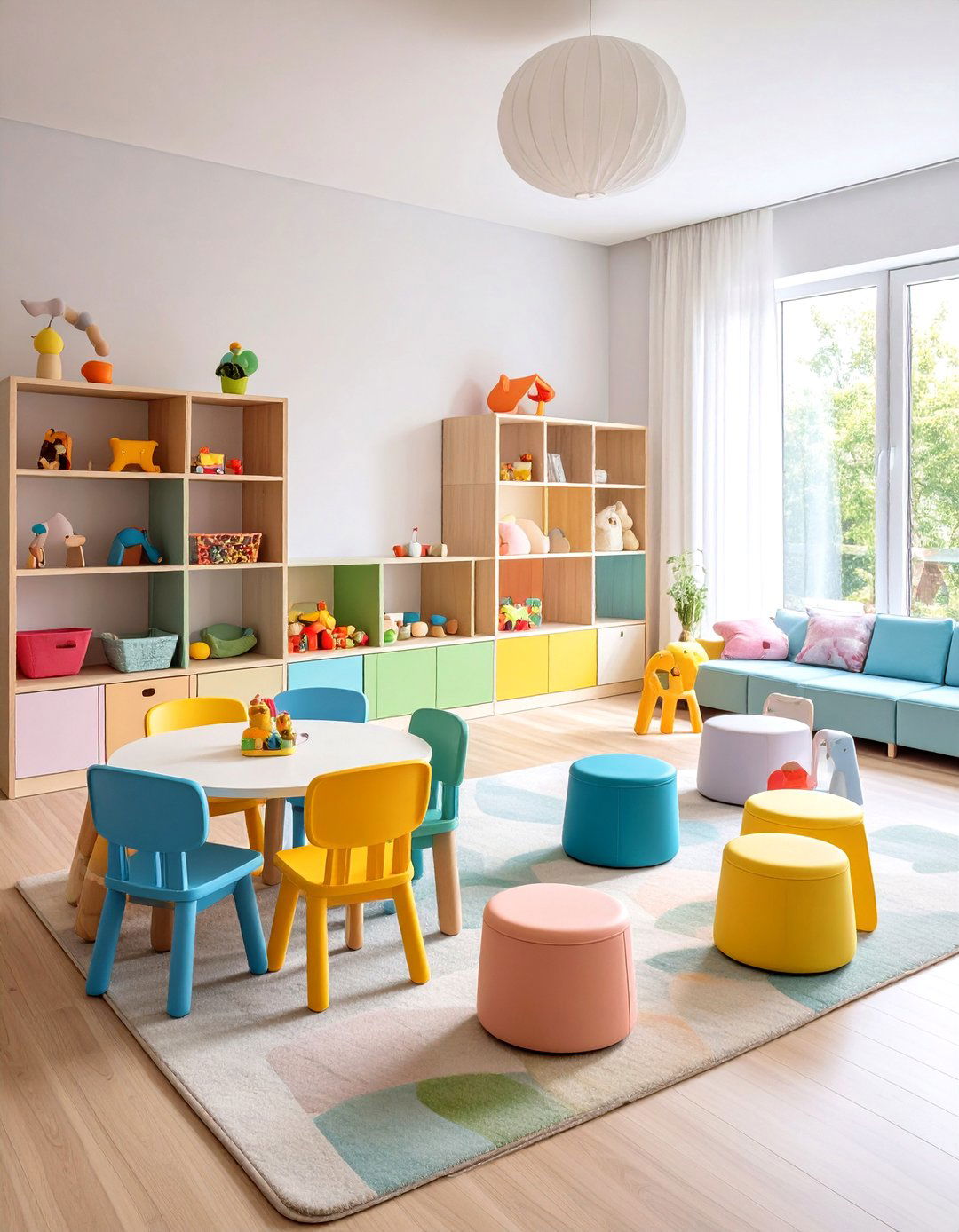
Opt for low, rounded-corner furniture—tables, chairs, and storage cubes—to minimize sharp edges. Furniture at toddler height promotes independence, and pieces with no pinch points reduce injury risk.
20. Personalized Name Décor
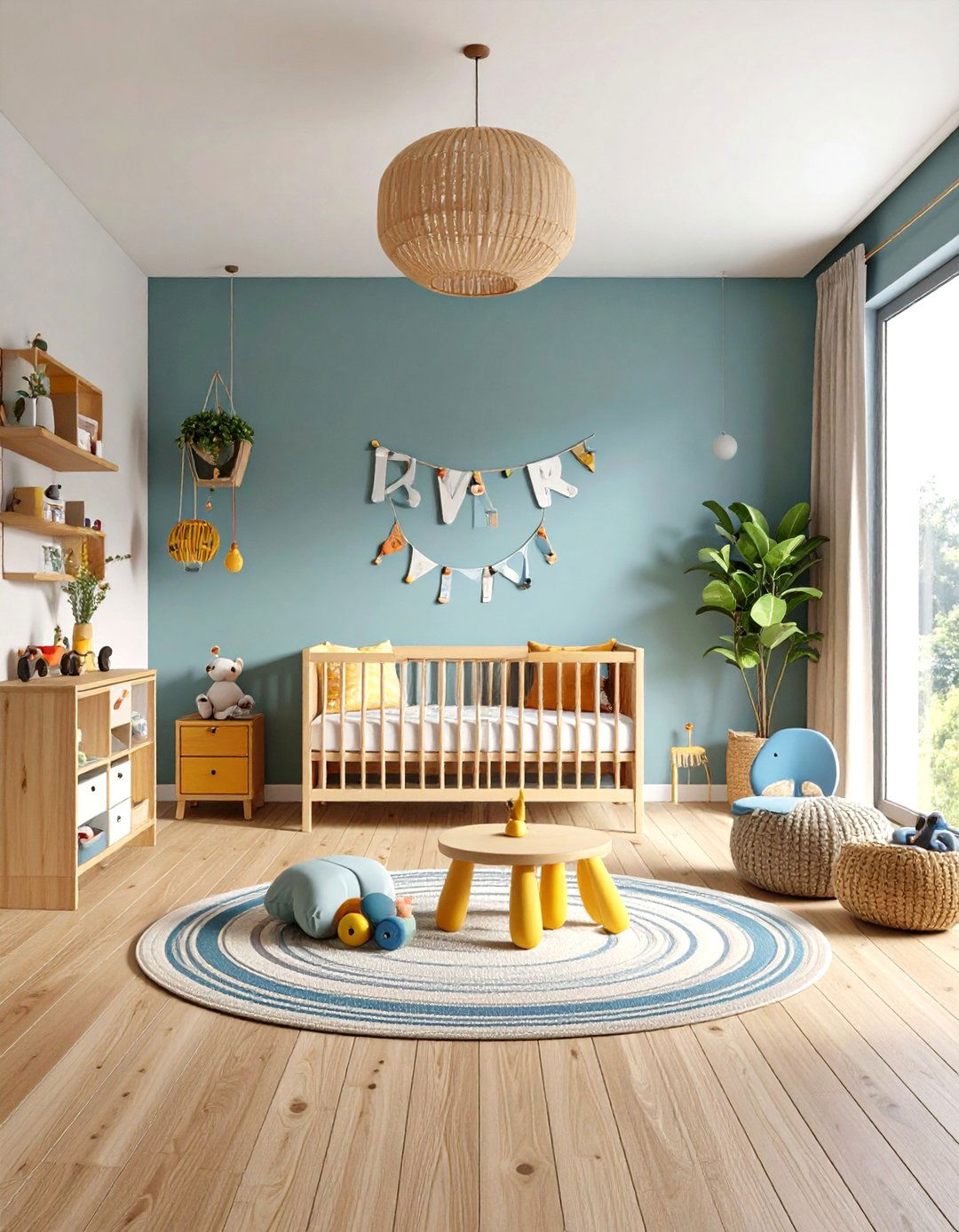
Incorporate your child’s name on a custom wooden sign, fabric banner, or decal above the bed. This personal touch makes the room feel uniquely theirs and can be updated easily if their favorite colors or interests change.
Conclusion:
Crafting a toddler room that balances safety, functionality, and playful style sets the foundation for your child’s growth and creativity. From versatile convertible furniture and smart storage to interactive walls and cozy nooks, each element supports independence and learning. Incorporate sustainable materials and adjustable DIY features to adapt the space as your toddler’s interests evolve. Personal touches, bold accents, and soft textures ensure the room is both engaging and nurturing—a space where your little one can play, explore, and rest in comfort.


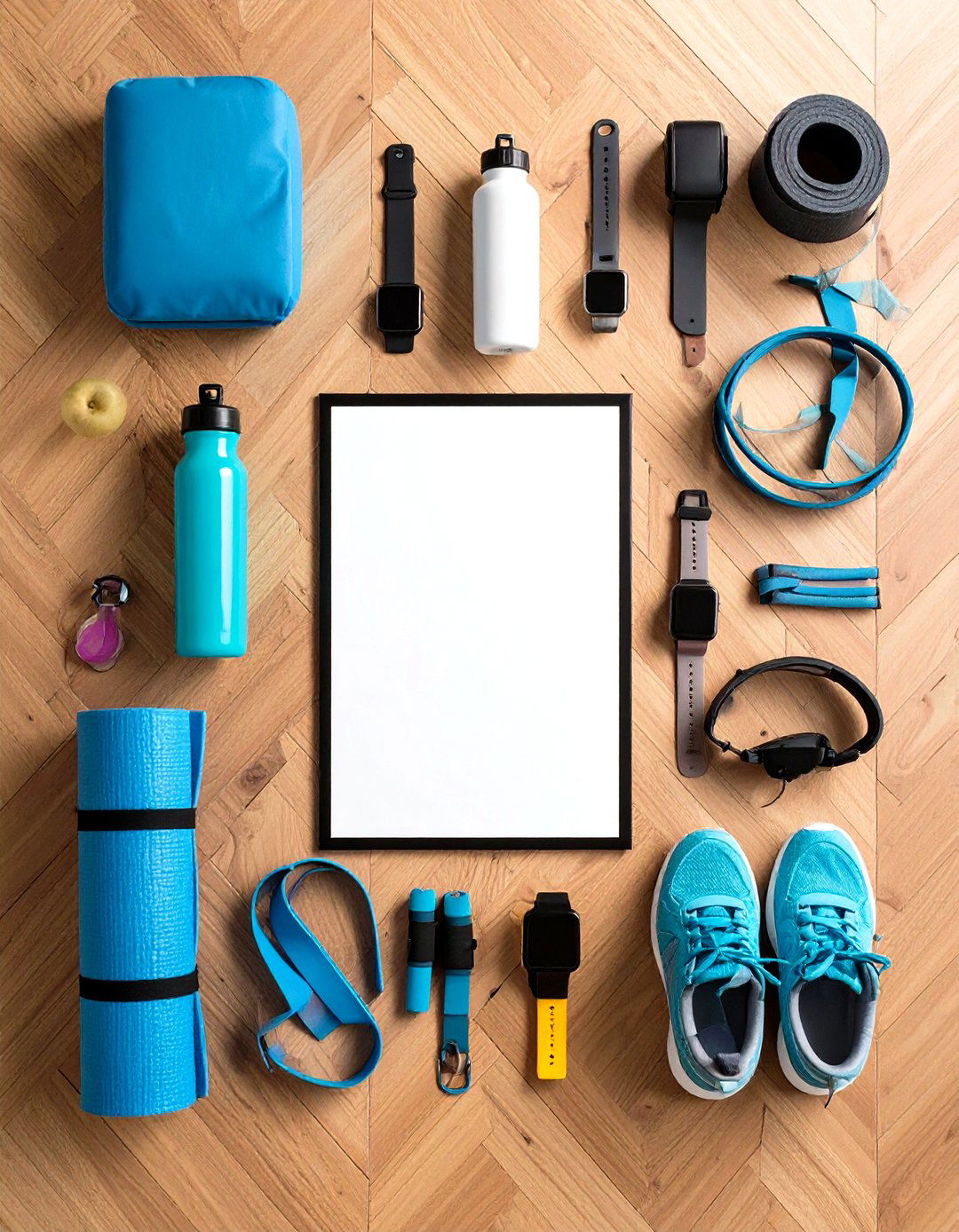


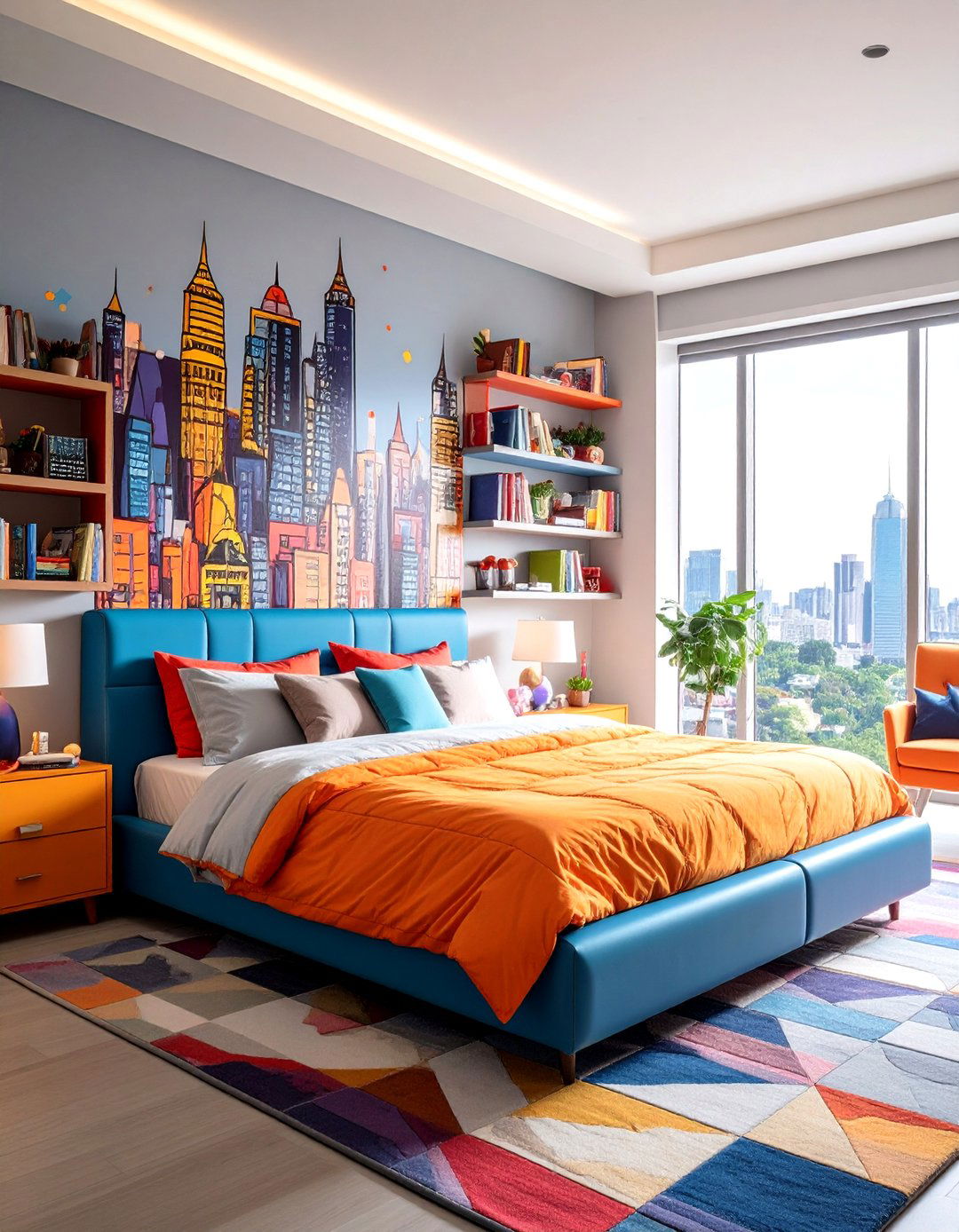
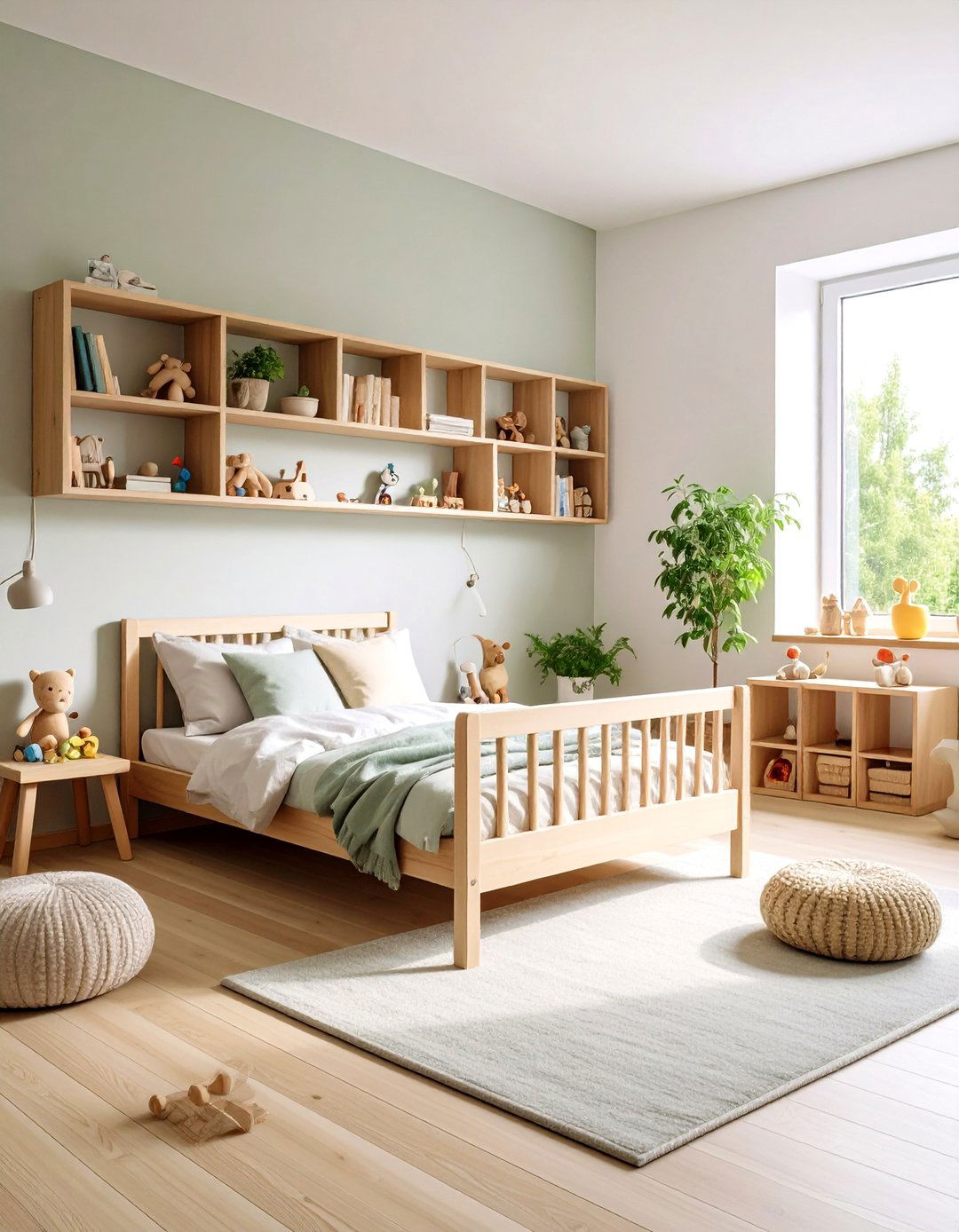
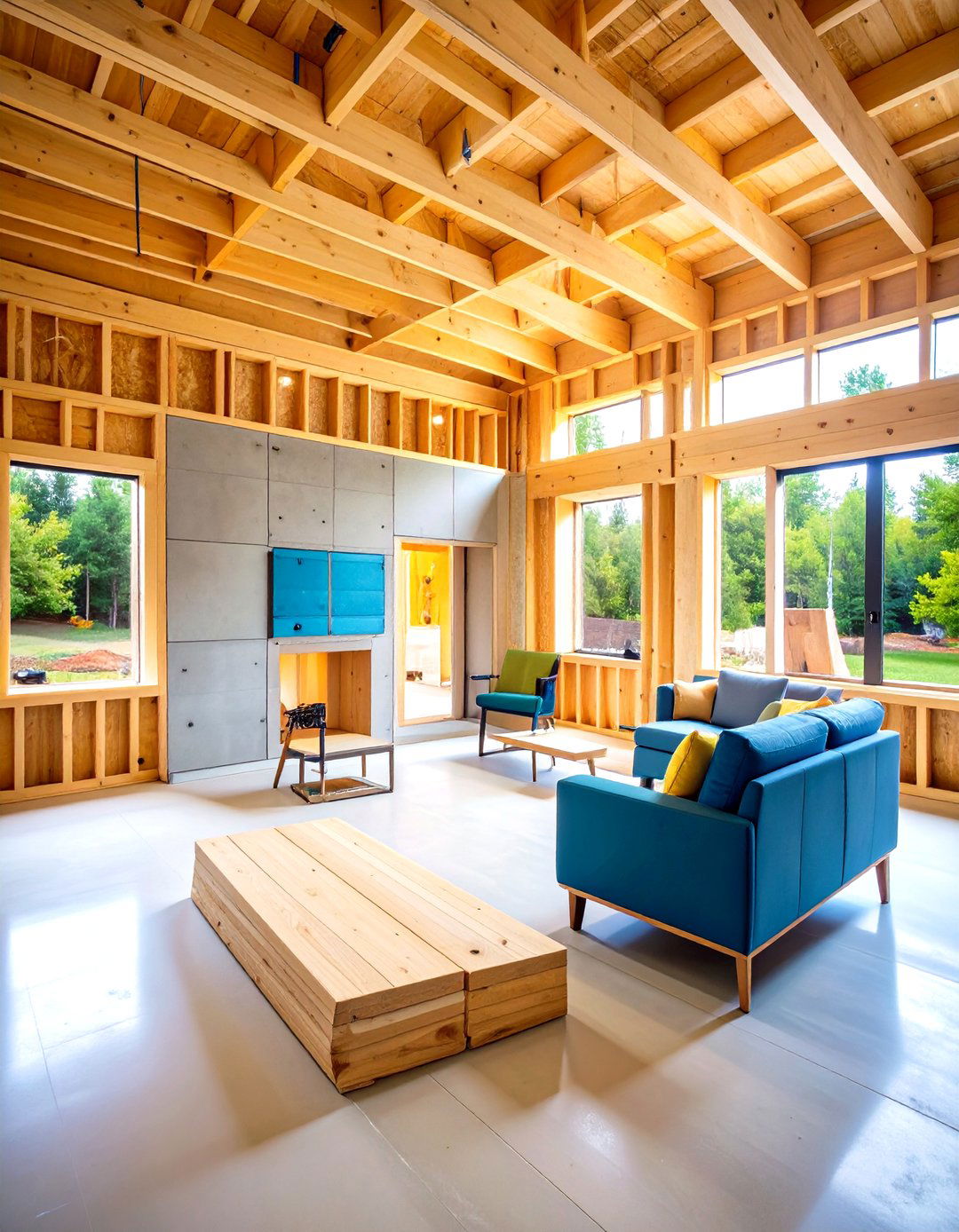
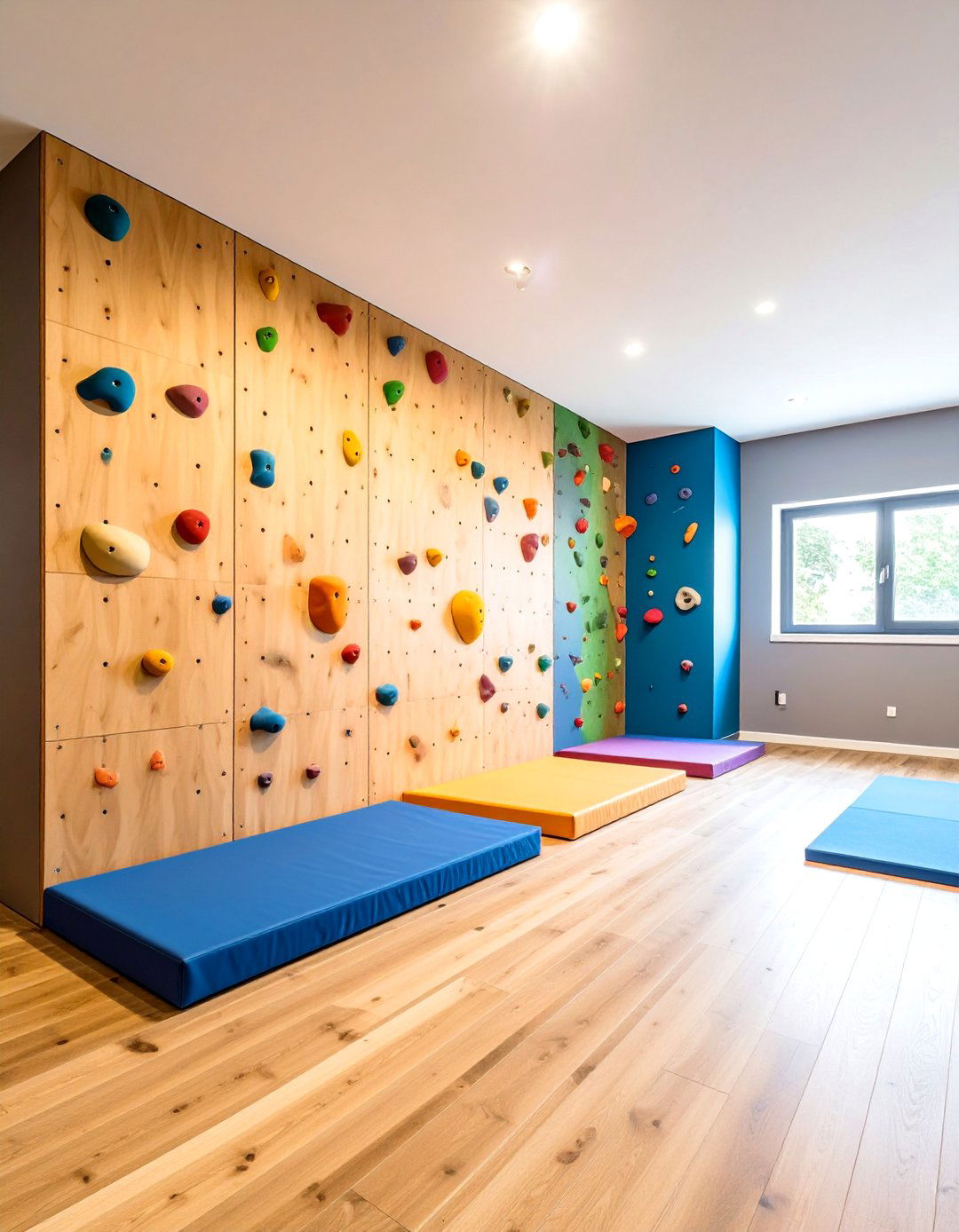



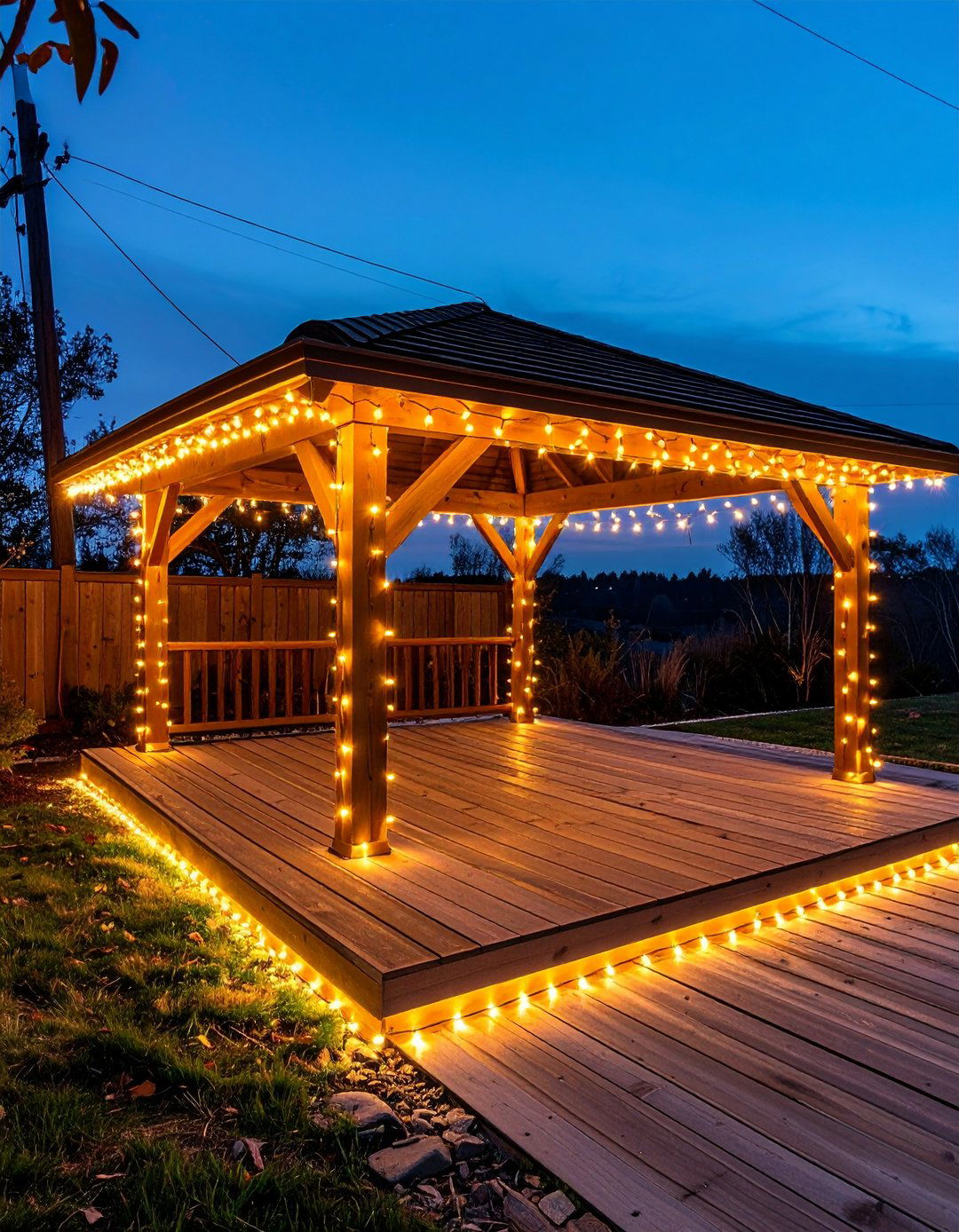
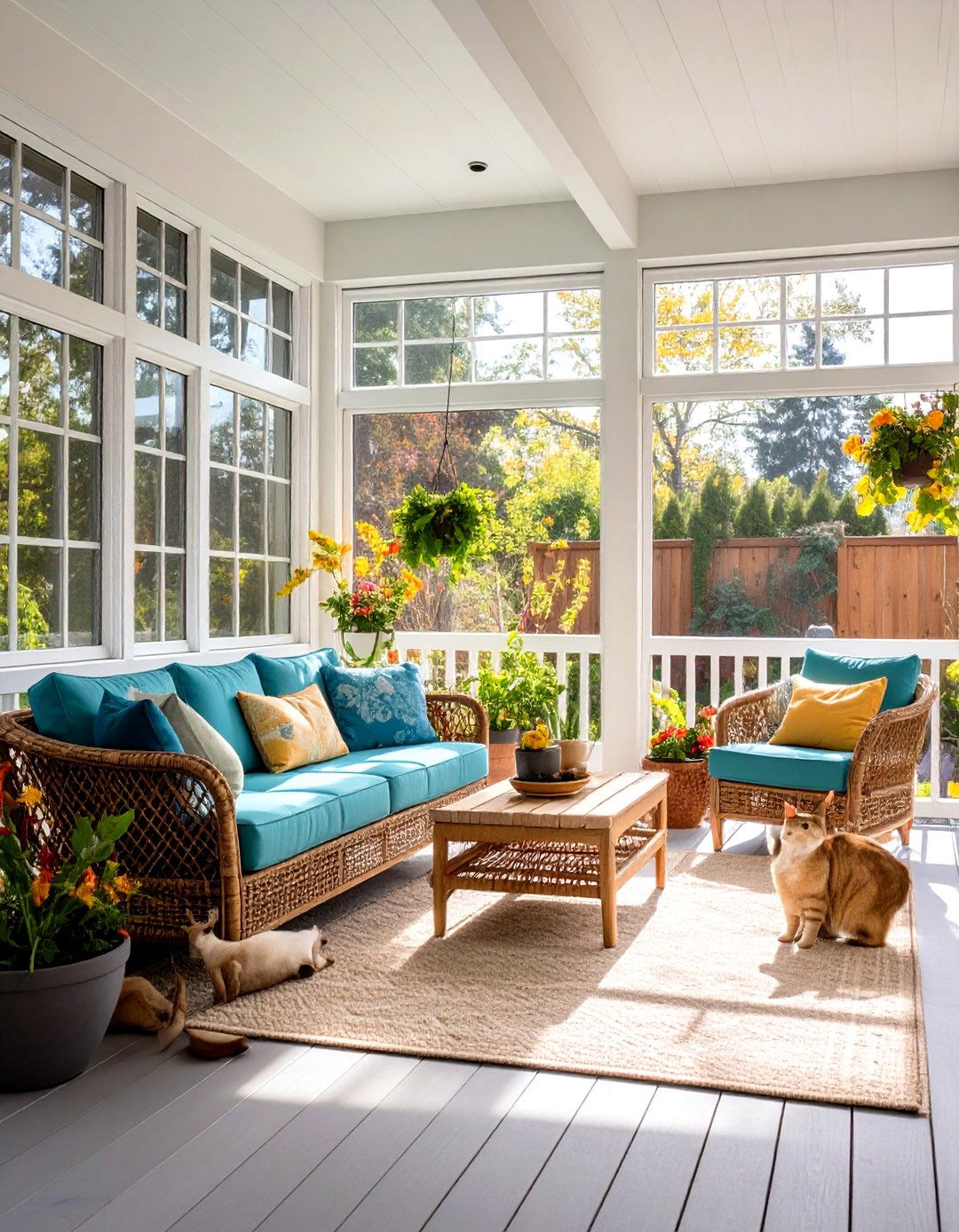
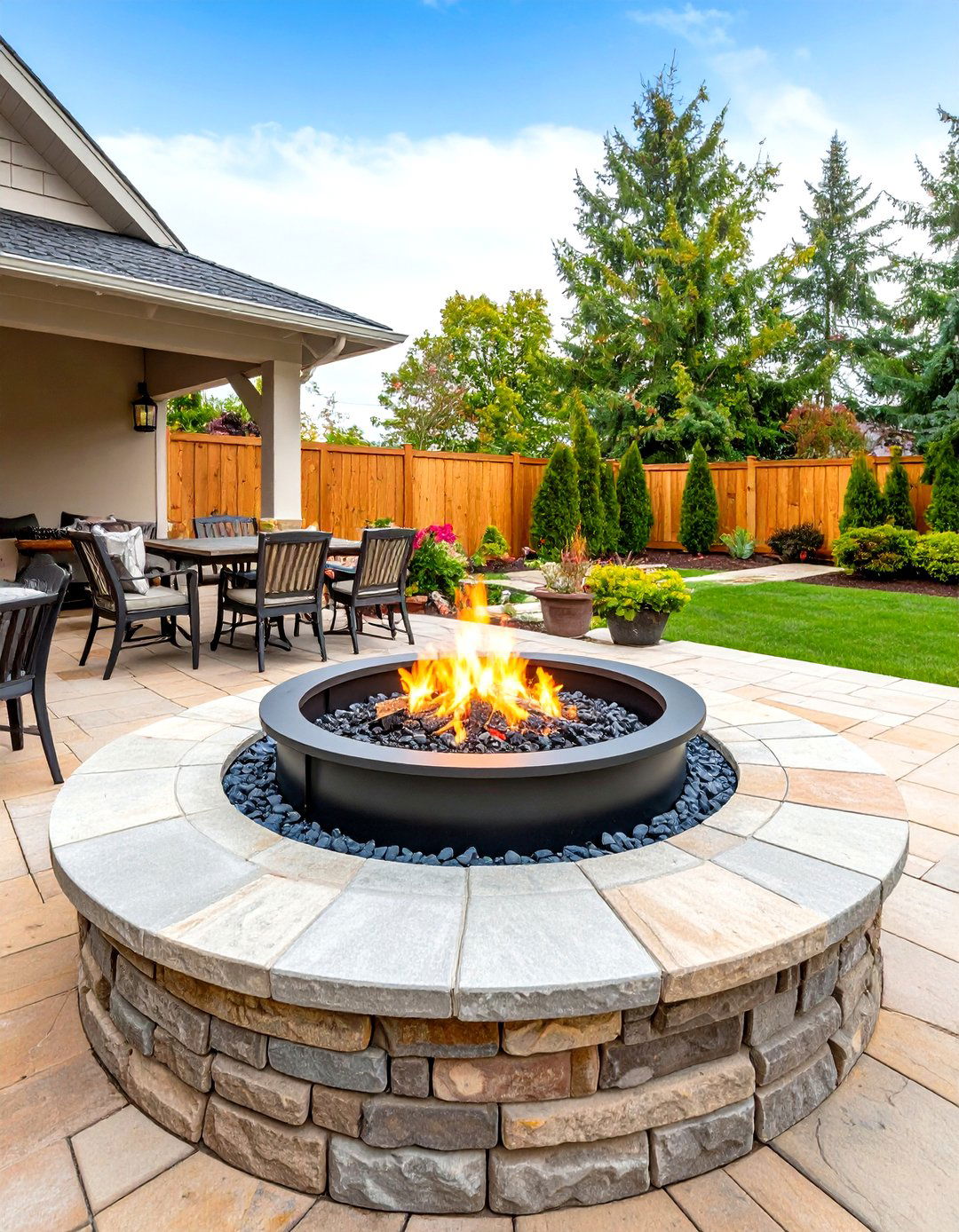
Leave a Reply